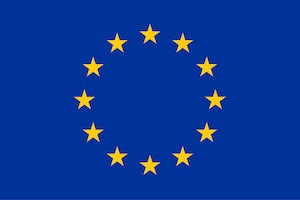Open Data on COVID-19 Now Available in Data Observatory

It seems already like an eternity since the new SARS-CoV-2 coronavirus emerged in the Chinese city of Wuhan in late 2019. Now its related disease COVID-19 has turned into a global pandemic which keeps spreading and wreaking havoc in more than 210 countries.
The COVID-19 outbreak caught the world off-guard placing humanity in front of a global health economic and political crisis whose full consequences are still unknown. It is in these times ruled by uncertainty when the attention paid to the work of data scientists analysts and researchers increases; showcasing how important and necessary their role is in our society.
In order to empower these professionals with more tools to analyze and provide a better response to the consequences of this pandemic CARTO has been making its platform available to public and private sector organizations doing research on the coronavirus outbreak via our grants program. To date hundreds of grants have been approved in 35 countries. In addition our team of data scientists and engineers have been actively working to build tools and providing analysis to several administrations worldwide.
Amongst these efforts we have experienced first hand how important it is to have access to ready-to-use and up-to-date datasets so data scientists can spend the majority of their time building models and interpreting the results before they become obsolete in this rapidly changing environment.
Open Data
For this reason we have joined the efforts already started by organizations such as Enigma and Azavea among others and are providing open access to some key datasets for COVID-19 research as public data accessible from CARTO's new Data Observatory.
From today we are happy to announce that the following datasets are already available and being updated on a regular basis:
- Corona Data Scraper: Aggregating data from many different official sources this source provides a summary of COVID-19 cases in the world at the lowest granularity possible in each country.
- Global data on healthcare providers and location of their facilities from Healthsites.io.
- Travel restrictions by country to understand the level of lockdown provided by the World Food Programme via the Humanitarian Data Exchange.
- Global data on public health restrictions provided by the ACAPS.
Use Cases
Now our users can start incorporating features from these datasets in spatial data science models using CARTOframes and the data enrichment methods to the Data Observatory. Over time we will keep adding new COVID-19 related datasets into the repository.
As one basic example below we have normalised the COVID-19 cases at county level in the US by 10 000 high-risk inhabitants (i.e. taking here population older than 60 years old); for that we have enriched the dataset with the population data at county level from ACS which is also available as open data in the Data Observatory.
This notebook we are sharing via Google Collab illustrates how to recreate the analysis showcased above once a CARTO user has enabled access to the Data Observatory via CARTOframes. If you are a CARTO enterprise customer but still do not have this functionality enabled please get in touch with a CARTO representative who will be happy to assist you.
In addition in order to facilitate wider access to these datasets CARTO has also made our Data Observatory public data project available to all Google BigQuery users. The name of the project is 'carto-do-public-data'. This notebook provides an example on how to work with the data from BigQuery and build visualizations using CARTOframes.
In need of support to apply Spatial Analysis and Spatial Data Science in the fight against COVID-19?













.png)


